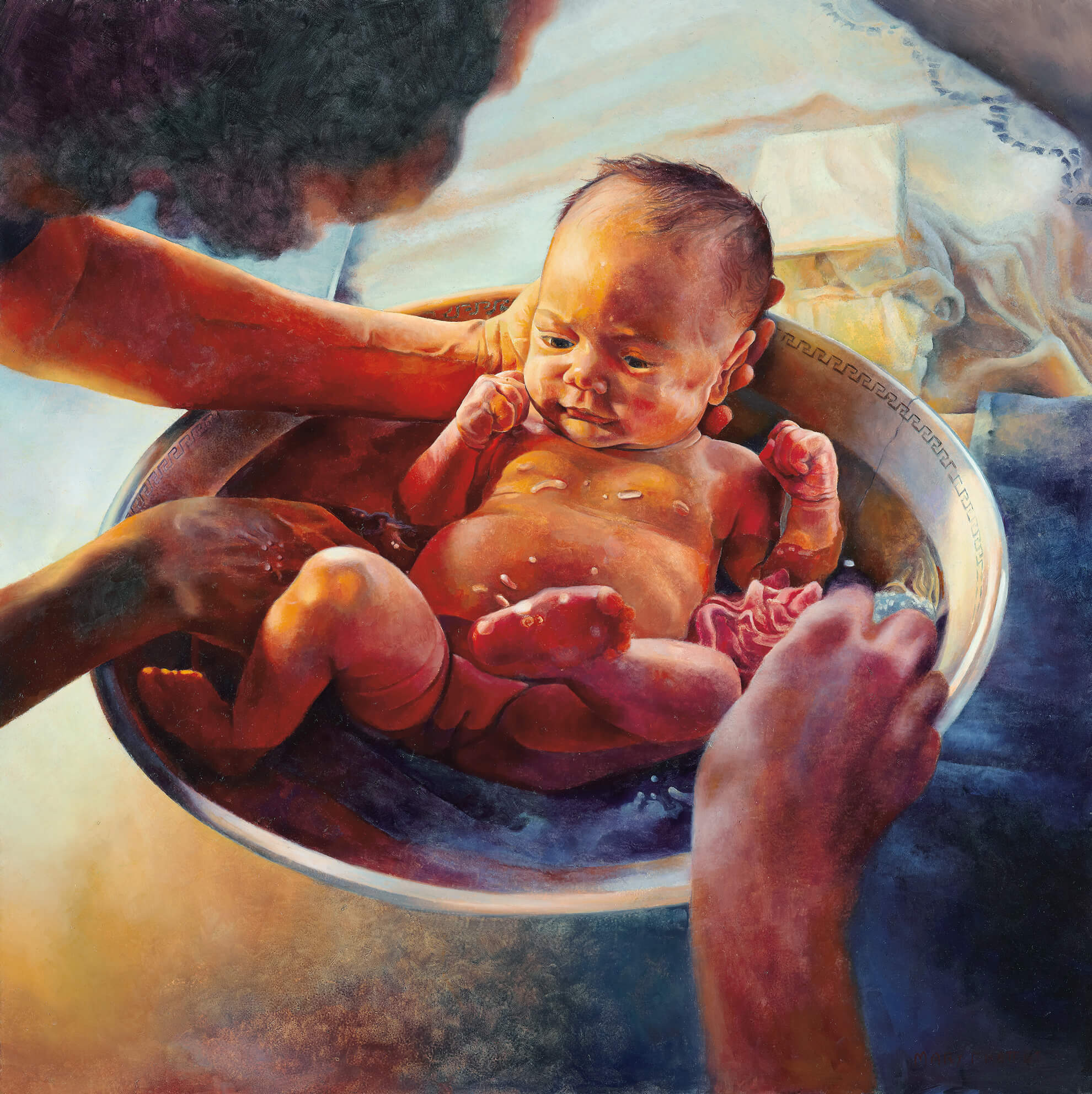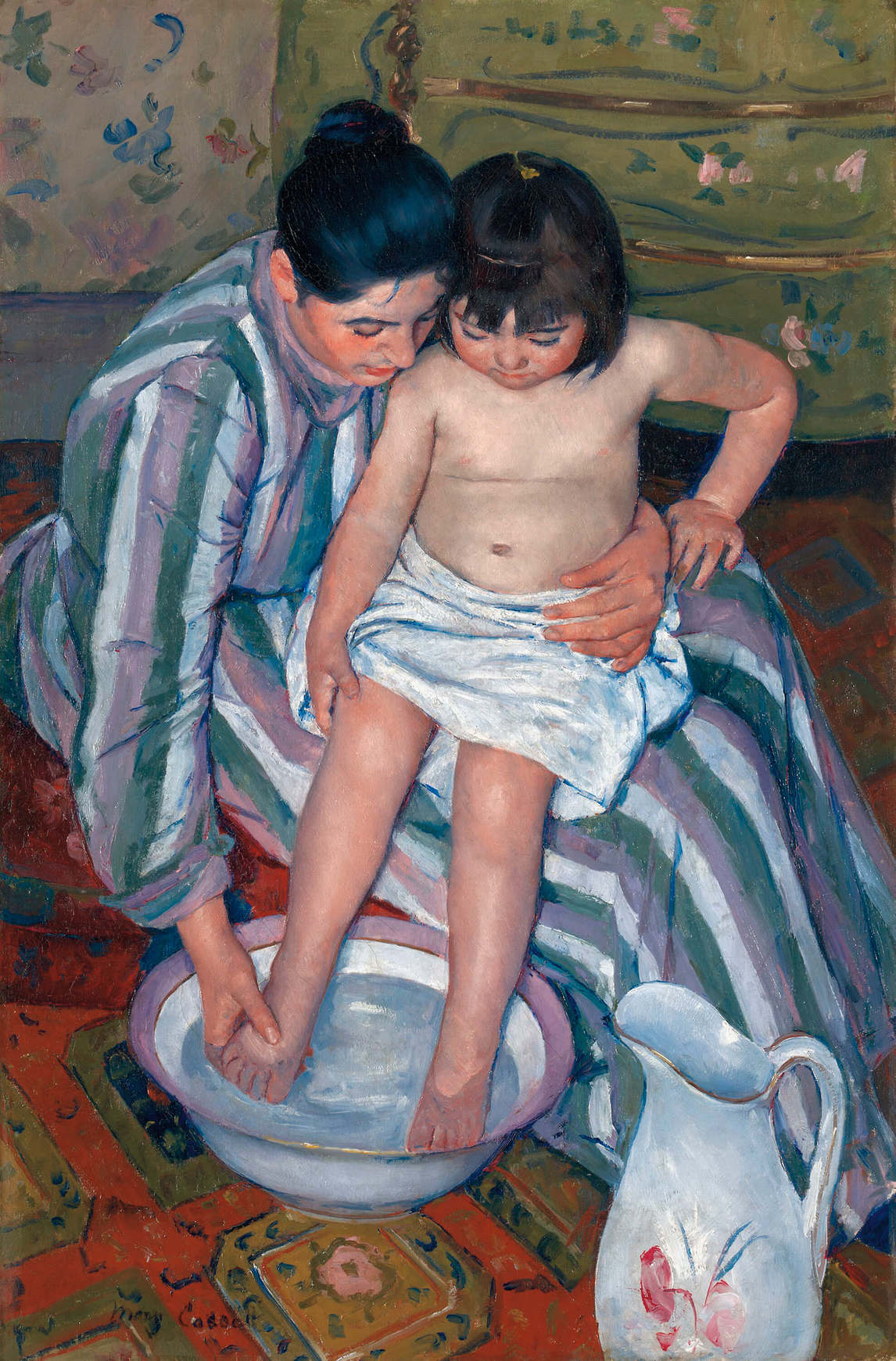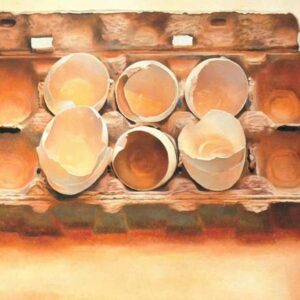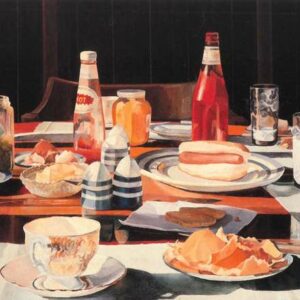Child with Two Adults 1983

Mary Pratt, Child with Two Adults, 1983
Oil on Masonite, 53.7 x 53.7 cm
Private collection
The baby in this painting is Mary Pratt’s first grandchild: her elder daughter Anne’s first child. The two adults on the periphery are Mary herself and Anne. In interviews over the years, Mary Pratt repeatedly called this work a favourite, telling House and Home, for example, that “the one I love the most is the baby in the bath.” The work is in a tradition of portraits of babies and children; one thinks of The Child’s Bath, 1893, by Mary Cassatt (1844–1926), for instance, or Children at the Basin, 1886, by Berthe Morisot (1841–1895). In comparison to its Impressionist forerunners, however, the impact of this painting is much less decorous than we might expect. The baby’s genitals are clearly visible, a view that many would find uncomfortable, despite its innocence.

This work depicts an intimate family moment, as three generations of females interact, a private moment made public in the painting. It is both heavily symbolic and very ordinary—familiar and marvellous at once, as are so many of Pratt’s paintings. Yet there is a thorn in this family scene, a sharp prick of discomfort. “The vivid, bloody red of both baby and bathwater seems to connote infant sacrifice, and it can be no accident that this child is female. Wonder and dread attend her ritual rebirth,” wrote Robin Laurence about this work. Just as the family’s Sunday dinner could be painted by Pratt as if she was depicting a sacrifice, this deceptive painting can easily lead the viewer, as it did Laurence, down a darker path than is immediately apparent in the composition. Pratt was never surprised by these sorts of readings. “People will find out that in each one of the paintings there is something that ought to disturb them, something upsetting,” she said. “That’s why I painted them.”
The blood-like quality of the water and the raw redness of the baby’s skin are two such elements, which work almost subliminally. A more deliberate insertion of psychological symbolism is the crack in the china bowl in which the baby is being bathed. This structural instability provides the painting with a subtle element of discord. This cozy domestic scene is at risk, the bowl’s structural flaw standing in for the fears surrounding the future of the child. Babies are so fragile, this work reminds us. Indeed, for the retrospective exhibition Mary Pratt, the curators decided to hang this work next to Eggs in an Egg Crate, 1975. Co-curator Sarah Fillmore explained, “We started to think of everything as a self-portrait. Here’s this moment. Sometimes it’s painful and sometimes it’s glorious and it adds up to the moments of a life lived.”

 About the Author
About the Author
 More Online Art Books
More Online Art Books
 Acknowledgements
Acknowledgements